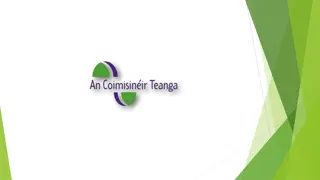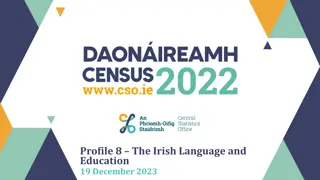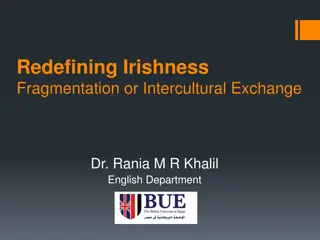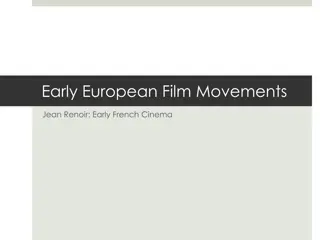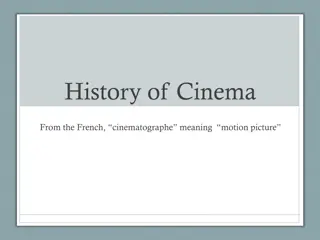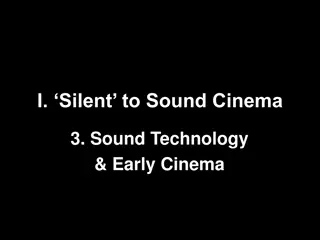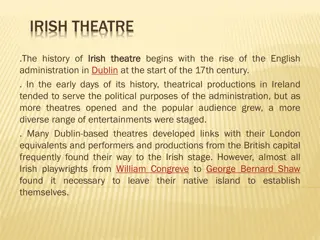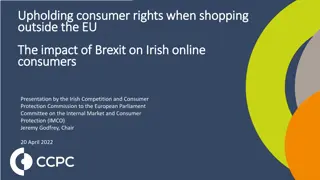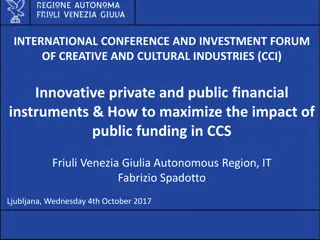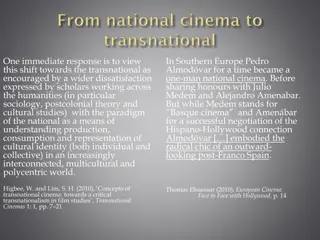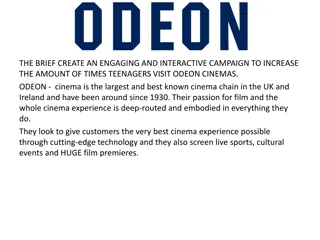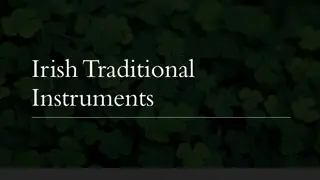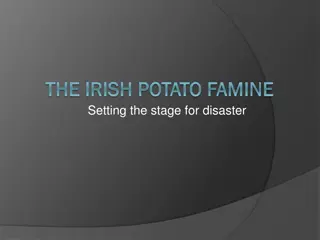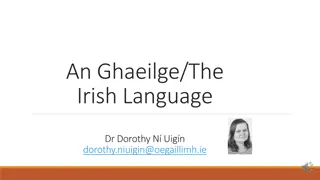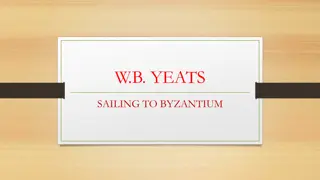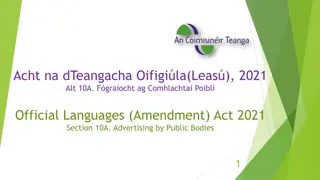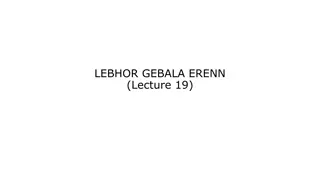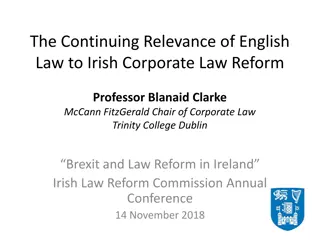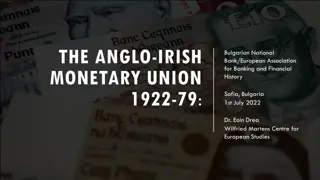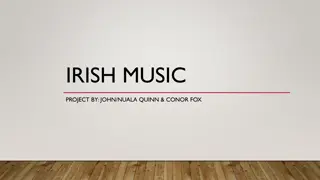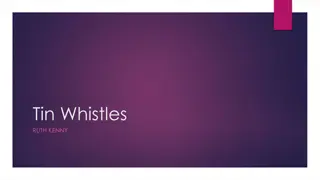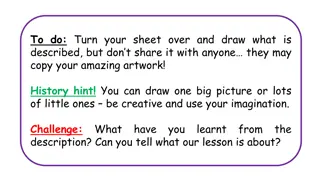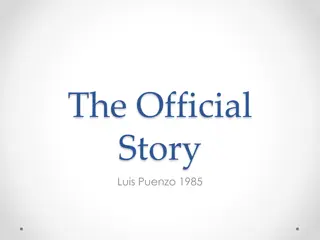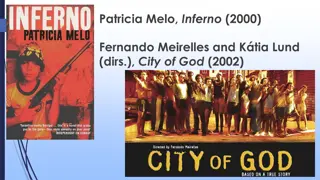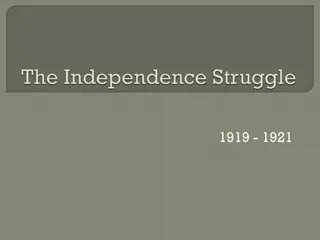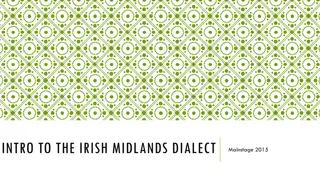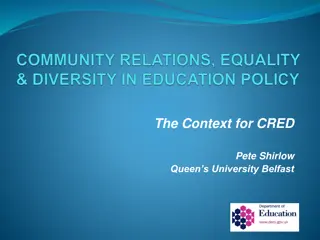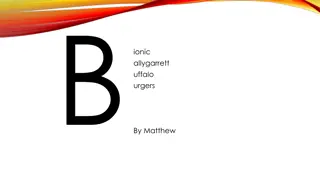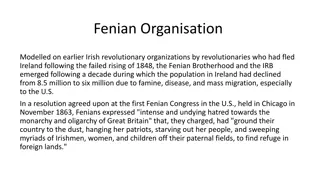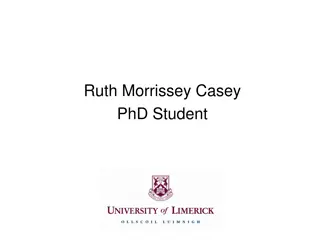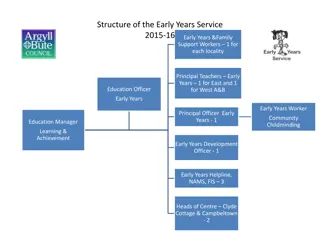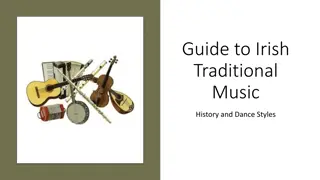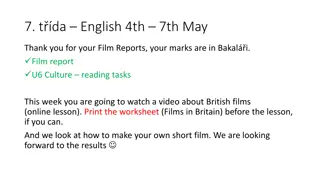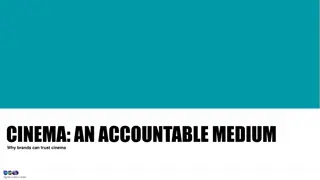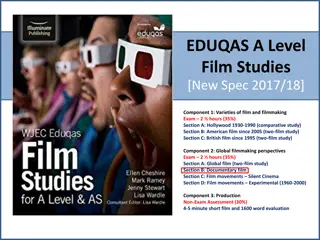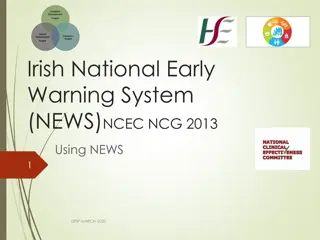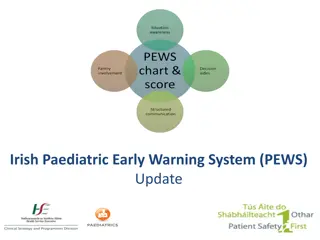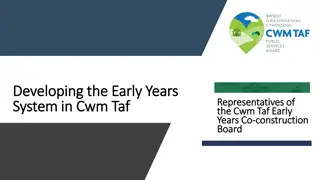A Brief History of Irish Cinema: Early Years to Contemporary Times
Irish cinema has undergone significant transformations over the years, from the early days of silent films to the rise of indigenous filmmaking and the contemporary Irish cinema scene. The journey explores key milestones such as the first exhibited movies in Ireland, James Joyce's venture into movie exhibition, and the intertwining of politics and art in Irish film production. This overview offers insights into the evolution of Irish cinema and its reflection of Ireland's cultural and historical contexts.
Download Presentation

Please find below an Image/Link to download the presentation.
The content on the website is provided AS IS for your information and personal use only. It may not be sold, licensed, or shared on other websites without obtaining consent from the author. Download presentation by click this link. If you encounter any issues during the download, it is possible that the publisher has removed the file from their server.
E N D
Presentation Transcript
CONTEMPORARY IRISH CINEMA SUMMER 2014 WEEK 2 A history of Irish Film(making)
Looking Back An overview of Irish cinema might identify three periods: Early cinema, silent & sound, 1910-1970ish Rise of indigenous filmmaking, 1970s-1990ish Contemporary Irish cinema, 1989- today
Early Cinema The Star of Erin Theatre of Varieties (now the Olympia) showed first exhibited movies in Ireland, April 20th, 1896
James Joyce, movie exhibitor Joyce partnered with a number of Italian business men to open Dublin s first movie-only theater, the Volta on December 20th, 1909. 45 Mary Street It initially didn t go well and Joyce sold his share a year later. Stayed open until the 1940s.
The early days Early cinema coincides with incendiary period in Irish history (Easter rising of 1916) Culture main conduit for expression of nationalism Literature-focused revival wove myth of Irishness both antiquarian and revolutionary Although writing inspired by peasant tradition, audience was primarily metropolitan/m.c. Film, however, proletarian form and Irish both rural/urban quickly embraced the medium
Early production 1917 Irish newsreel started by Norman Whitten, manager of General Film Supply, Dublin mix of sporting events, religious pageantry, political events Britain for the British, Irish events for the Irish The Sinn Feinn Review 1919, Brits close it down Sidney Olcott owner/producer of Kalem Film Co. Parents from Cork (he s Canadian) Big US producer in 1910s, scripts and locations 1910 travels to Ireland to shoot The Lad From Old Ireland
Politics and Pretty Pictures Between 1910-1914 O Kalems made 30 pictures dealing with Irish history/Irish American experience Historical melodramas with rural settings The British typically shown not demonized as much as you would expect, just out of place i.e. go home. Some indigenous filmmaking Irish Destiny (1926) IRA volunteer during the war of independence, politics, passion, post-card views
The sound era Dominated by Hollywood and British film productions Ardmore Studios opened by Irish government in 1958 The Man of Aran , Robert Flaherty(1935) The Quiet Man, John Ford (1952) Ryan s Daughter, David Lean (1970) 10 million budget, most expensive Irish film, made by a British director for Hollywood (MGM) https://www.youtube.com/watch?v=T0qXgUvQo2s
John Huston Important/successful Hollywood director (Maltese Falcon, Asphalt Jungle, etc.) Moved to Ireland to work/live from 1952-1970s Supporter of Irish film industry, chaired report calling for government support for Irish film in 1970 Last film The Dead (1987), from James Joyce short story
New Wave Irish 1970s-1980s Like new Hollywood of the early 70s, a new set of young Irish directors begin to make films influenced by the post-war European cinemas, particularly FNW and Latin American 3rd Cinema. Directors of this generation include Bob Quinn, Pat Murphy, Joe Comerford, Cathal Black. Varied types of films but all involved in to establish a continuity of production dealing with indigenous stories. Worked together (AIP) on each others films, lobbied
Indigenous Storytelling First Irish Film Board (1981-1987) begins to financially support indigenous filmmaking by Irish filmmakers. Charged with developing an industry as well as a film culture Tension between these two Annual budget of $750K Contributed to some important films and helped start the career of Neil Jordan, first feature Angel (82) Political/economic and ideological divisions led to government closing board in 1987, citing poor return on capital. Replaced with Section 35, tax breaks. Two years later, My Left Foot (1989) won two Oscars
Indigenous Filmmaking Stylistically less polished, experimental in structure, more open-ended Darker subjects that were than antithesis of the landscapemelodramas Bob Quinn s first film Poitin (1978) shot in the west of Ireland in Irish, first Irish feature to be shot in Irish First film to receive an Arts Council grant for the script Instead of beauty, land is shown as physically hostile and characters as often unloveable and self-interested https://www.youtube.com/watch?v=I3YdI7f_bQg
Indigenous Filmmaking Others tackled non-rural subjects including inner-city life, Cathal Black, Down the Corner (1978) and Pigs (1984), Joe Comerford, Withdrawal, 1974) The role(s) of women in Irish society, particularly Pat Murphy, Maeve (1982) and Anne Devlin (1984) The negative roles of the Catholic Church (Our Boys, Cathal Black, 1980), Bishop Story, Bob Quinn, 1994)
The Irish Film Board, 2nd go round Irish Film Board/Bord Scann n na h ireann reformed in 1993 by the first Minister for Arts, Culture and the Gaeltacht, Michael D. Higgins. Agreed upon the morning that Neil Jordan won Oscar screenplay for Crying Game Funding began at 1 million Euros, today approx 16. New tax incentives i.e. Section 481 New structures and new funding means more Irish films made in the 1990s than in all the previous 9 decades put together.
Funding Indigenous Films Mix of funding IFB schemes including script development http://www.irishfilmboard.ie/funding_programmes/Overvie w/32 Funding from TV (post theatrical distribution) RTE and BBC Irish and International private investment utilizing tax incentives i.e. co-productions Distribution deals http://www.irishfilmboard.ie/financing_your_film/
Joe Comerford Born 1947 Went to National College of Art & Design RTE in early 1970s as cameraman Left to make independent films Films are elliptical and narratively complex Focused on margins of Irish society, often tied to the political/cultural implications of violence related to the situation of Northern Ireland Reefer and The Model (1988) film premiered in Galway that year.


